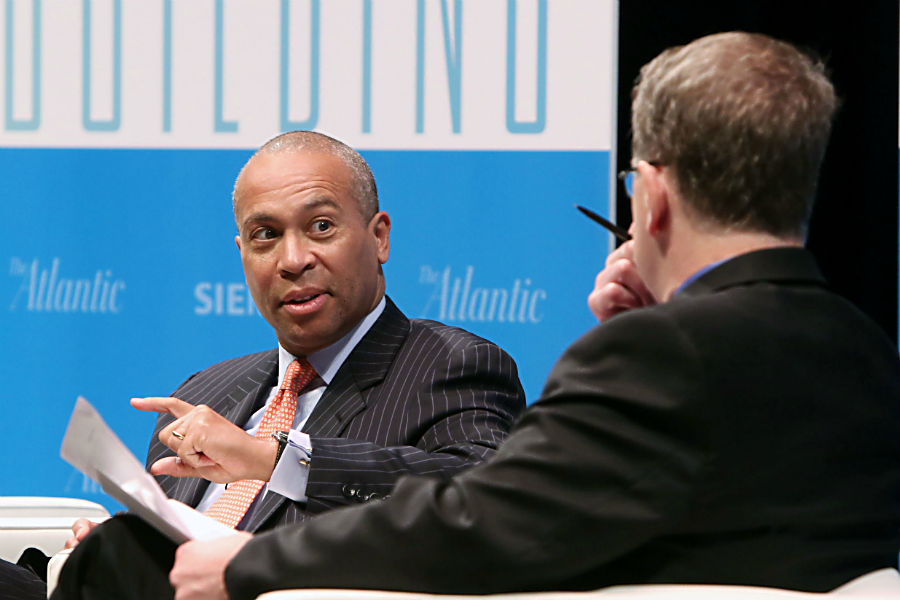A jump in investments aimed at doing good
Loading...
The amount of money invested worldwide to alleviate social and environmental problems grew strongly last year.
Some $15.2 billion in new money was devoted to so-called “impact investing” in 2015, according to a survey released Wednesday. That brings total assets devoted to impact investments to at least $77 billion worldwide, more than double the amount reported in 2012.
The idea behind these efforts is that companies can do well for investors while targeting specific social and environmental ills and measuring the impact of their business practices.
Money is flowing especially into companies aiming to improve poor people’s access to banking and financial services, boost employment in poor communities, improve health in areas where access to health care is limited, and spread renewable energy and clean technology. This brand of capitalism may help solve problems that government and philanthropy have so far failed to eradicate.
Such investments, while growing rapidly, still represent a tiny sliver of the investing world. In 2014, the latest year for which results are available, investments under management of the top 500 firms worldwide totaled $68 trillion, according to a survey by P&I/Towers Watson. The comparable survey of active established impact investors in 2014 was $60 billion, according to the Global Impact Investing Network (GIIN), the New York nonprofit that conducted the impact survey. That represents less than 0.1 percent of the investment world.
Put another way: The field would have to grow at least 10 times just to equal a penny out of every dollar invested.
“We are pleased with the results,” Amit Bouri, the GIIN’s chief executive officer, says in a telephone interview. But “impact investing is still a nascent market…. The vast majority of investors don't know that impact investing is possible.”
Roughly half of impact assets are directed at populations in developed markets, the other half are aimed at emerging markets, according to the GIIN report, which surveyed 158 investing organizations, including investment fund managers, private foundations, banks, development finance institutions, managers who handle the investments of wealthy families, pension funds, and insurance companies. (The GIIN survey is restricted to established players, so it does not include impact investments made by newcomers.)
Nearly 60 percent of these groups primarily target opportunities that, once adjusted for risk, should provide so-called “market rate” returns – on par with regular, non-impact investments. The rest aim for lower returns, under the theory that some investors will give up a portion of their return if they know the companies they fund can boost their social impact on the ground.
“Investors continue to be quite pleased with the performance of their investments,” says Mr. Bouri. In the survey, 99 percent said the social impact of their investments were in line with or better than their expectations; 89 percent reported that their financial performance was in line with or above their expectations, he points out.
For years, impact investing – indeed, all investing framed as “socially responsible” – suffered from the suspicion that its returns were subpar because they aimed to accomplish something positive. Recent research suggests otherwise. That is one reason large investment firms are moving to get involved in impact investing.
Last year, BlackRock Inc., the world’s largest asset manager, and Bain Capital announced they were creating impact units to begin meeting demand for such investments from their clients. Goldman Sachs Asset Management, already active in the space, acquired impact-investment firm Imprint Capital Advisors. Also, Axis Bank, India’s third-largest private sector bank, and HESTA, an Australian retirement fund for workers in health and community services, made moves last year to begin making impact investments.
Many of these investments are considered risky and, thus, are restricted by law to wealthy investors. But efforts are under way to make them available to ordinary investors. (See Got $20? You can be an impact investor.)
For all the growth, many established impact investors remain cautious, making commitments to fund a certain level but not pouring in money hand over fist. Of the 97 organizations that participated in both of GIIN’s 2014 and 2015 surveys, nearly half decreased their commitments to impact investments. Overall, the capital this group committed fell by 7 percent last year. Such ebbs and flows may have many causes, Boura says.
One potential reason: the lack of high-quality investment opportunities with a proven track record, which was the industry’s No. 2 challenge last year, according to the survey.








